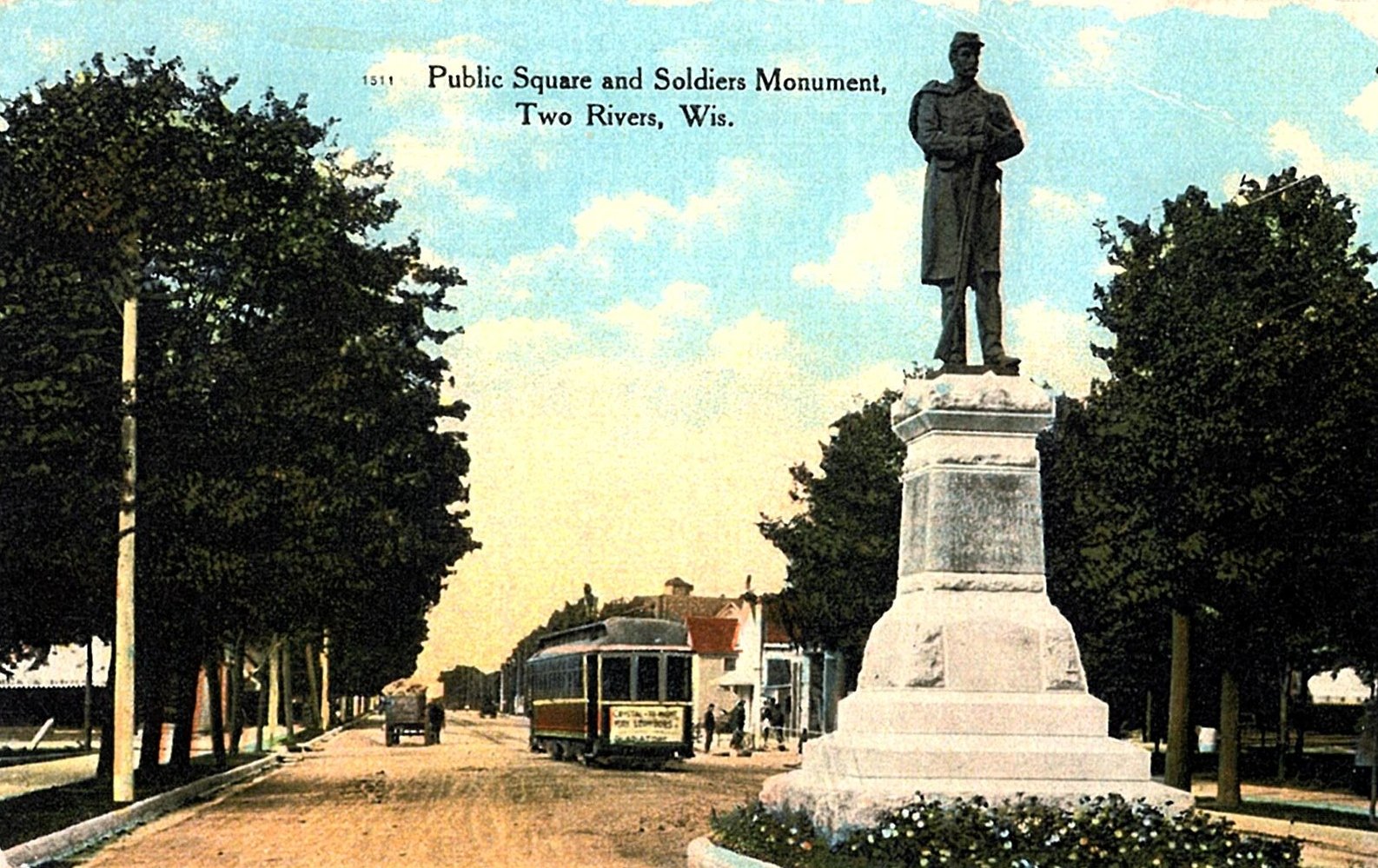Civil War Soldiers Monument Dedicated on June 9, 1900 in Two Rivers
On November 7, 1899, members of Joseph Rankin Post No. 219, Grand Army of the Republic, appeared before the Two Rivers Common Council to request the city’s support for a monument to honor the 142 men from Two Rivers who served in the Civil War. A resolution to appoint a committee of citizens to solicit subscriptions was adopted.
Committee members included J. E. Hamilton, president; Peter Schroeder, vice-president; Peter Gagnon, treasurer; and W. J. Wrieth, secretary. Funds were solicited from individuals, businesses and workers at the wood type, pail, veneer seating and aluminum factories. By January 1900, the committee had completed its work, raising about $1,300.
Permission to place the monument in the middle of Washington Street, where it passes through the public square, was unanimously approved by the Common Council on January 16, 1900.
A monument design submitted by the Friedley & Voshardt Co. of Chicago was selected. It featured an 8½-foot sheet metal figure of a Union soldier at ‘parade rest’ atop a granite pedestal, 13 feet high. The statue consisted of 100 thin sheets of copper, shaped by hammering and soldered together – the same metalworking technique used to make the Statue of Liberty. Herman Voshardt, a partner in the architectural sheet metal firm, was born and raised in Two Rivers.
By early May, local mason Carl Kirst had completed the masonry work on the granite foundation for the sculpture. A smooth side on the stone shaft was carved with the inscription: Erected 1900 in memory of those who fought in defense of the Union 1861-1865.
On Saturday afternoon, June 9, 1900, a large crowd gathered to witness the unveiling of the Soldiers Monument in Two Rivers. The program began with a parade featuring horse-drawn carriages of speakers, city officials and the monument committee. Then came the Two Rivers National Band, G.A.R. posts and militia, city fire department and civic societies. As the marching column approached the monument and speakers stand, hundreds of school children, directed by Prof. B. J. Wetzel of St. John Lutheran School, sang Rally ‘Round the Flag.
The exercises were opened with a prayer by Father Joseph A. Geissler of St. Luke Catholic Church, followed by the presentation of the monument to the city by William F. Nash on behalf of the Jos. Rankin Post. The monument was unveiled by Miss Mae B. Hurst, a daughter of William Hurst, a former mayor who had served in Company D, Twenty-Seventh Wisconsin Infantry Regiment and helped organize the G.A.R. post at Two Rivers in 1886.
The unveiling of the monument was followed by a national salute fired by the U.S. Revenue Cutter Morrill from the harbor. The chorus then sang The Star-Spangled Banner and the monument was accepted by W. J. Wrieth, president of the common council.
The program continued with a poem To The Silent Soldier by Rev. John N. Davidson of the Congregational Church, followed by the address A Nation’s Ideal by Judge James S. Anderson and an oration in German by former judge Emil Baensch. The program ended with the singing of America and patriotic band music.
By the 1930s, motor travel and public safety concerns had increased and the large monument in the middle of Washington Street was considered a traffic hazard. In May 1931, the monument was moved to its present location on the east side of Central Park.
For 123 years, the Soldiers Monument has silently stood in the center of the community as a lasting reminder of those who fought to preserve the Union. The Civil War statue, an important outdoor art work in the city, was listed on the National Register of Historic Places as part of the Central Park Historic District in 2000.


